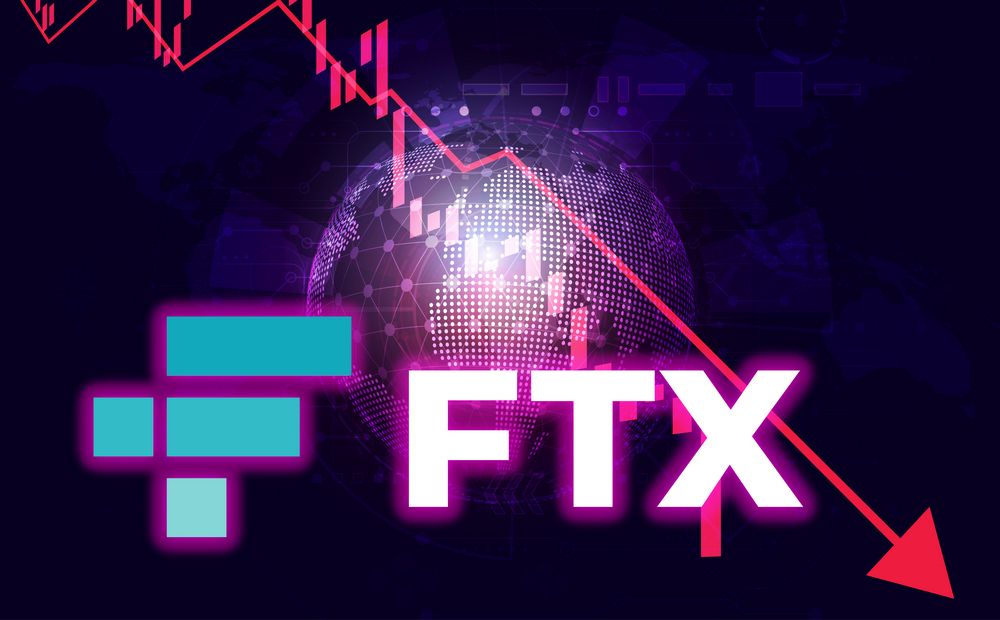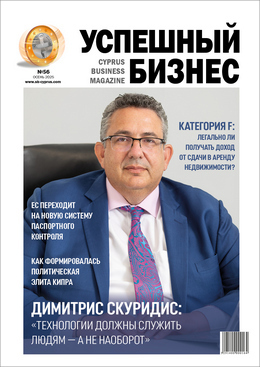The FTX collapse and scandal continue to unfold in the media. As a tech investor and advisor, I can’t help being more than a little furious with the investors who backed it so consistently over years with $ 1.8 billion in total capital raised. Many of these are regulated entities; others invest public money or pension fund assets. Their apparent failure to insist on real transparency and better governance is almost certainly an enabling factor in how FTX was managed. And therefore, their failure is arguably a factor in FTX’s collapse.
Let’s start by looking at what FTX was before its bankruptcy announcement. FTX was a crypto exchange. This means that buyers and sellers were able to create and fund their accounts, and then buy or sell cryptocurrencies or crypto derivatives. An exchange does not trade its own money: an exchange allows clients to conduct trades. The income of an exchange typically comes from trading fees: from the “flow” of buy/sell customer trades occurring where each trade incurs a transaction fee.
According to Business of Apps, on 6 September 2022:
1. FTX made $1.02 billion revenue in 2021 compared to $85 million in 2020;
2. It had over one million users on its mobile and desktop platforms;
3. Peak 24-hour trading volume has reached $21 billion in 2021; 4. Annual trading volume of crypto reached $385 billion in 2020.
FTX was valued at $32 billion in January 2022 and has now collapsed because of a liquidity shortfall that was exacerbated by reputational damage. As doubts have grown about FTX’s ability to withdraw their own funds from the exchange, this created a “run” which eventually forced FTX to stop withdrawals and seek external investors to recapitalise the company.
This run was apparently exacerbated in the last days by a theft of crypto and cash reserves that many investors had on their accounts.
Now in receivership, FTX is a private company, operating in and regulated by the Bahamas. Although it complied with certain aspects of international regulation -- for example, it had a European MIDIF II brokerage license issued in Cyprus by CySEC -- it is arguably not a fully-regulated company. Why?
a. Because unlike a fully-licensed brokerage regulated by FINRA, the US Financial Industry Regulatory Authority, there was apparently no oversight on any of the critical elements of brokerage operations, notably the necessity to maintain segregated accounts for customer capital and to comply with detailed reporting requirements.
b. Because it is obvious that if the company does not publish fullyaudited accounts, including cash positions and banking operations, there is no way a regulator or any external authority will be able to form a strong opinion on whether the company is solvent and in compliance or not.
Any potential investor or brokerage user can spot this immediately from the non-existent financial information published on the FTX website.
On the occasions when I teach young founders, I tell them there are two types of investors: smart capital and stupid capital.
Smart capital usually means institutional investors with an investment thesis; a comprehensive due diligence process which challenges the founder team; an investment committee (decisions made by more than one person); participation in governance post-investment (usually through Board seats and sometimes insistence on nominating the CFO; and insistence on professional governance. I typically include most Sand Hill Road VC firms in this category: companies with multiple partners, investing a mix of own and client assets, with deep experience in the tech sector.
Stupid capital, in contrast, usually means decisions taken on the spur of the moment based on personal chemistry or attraction to a charismatic founder; few term sheet requirements on reporting or governance; decisions made by a single investor; little or no due diligence (or simple acceptance of documentation). Investment decisions are typically made due to Fear of Missing Out (FOMO) or due to falling victim to a “reality distortion field” such as that emitted by Steve Jobs, Adam Neumann or, apparently, Sam Bankman-Fried.
So, I was furious over the past three days when I learned that:
1. FTX had a 3-person Board: two company founders and their Bahamas lawyer. There are no Board committees one would expect: Audit, Compensation, Nomination. Not a single external investor had a seat at the board. There were no skeptical eyes looking at strategy, decisions or financial reports.
2. The company had an openlyexpressed relationship with Alameda Research, a crypto broker, essentially owned and operated by the same team that ran FTX. This is an obvious conflict of interest.
3. As we move forward, I am sure we will see additional conflicts of interest featuring FTX / Alameda investments in a number of other coins or related partners. This is a result of strategic decisions made. Formally, 130 related entities filed for bankruptcy alongside FTX.
4. The FTT token, which essentially held no value but a trading discount on FTX, reached a market cap of over $ 6 billion, and apparently was accepted by investors (and regulators) as a real asset.
5. The Financial Times reported that one of the largest liquid assets on FTX’s balance sheet was “Serum”, a cryptocurrency with a listed $ 2.2 billion in value. According to the FT, the same day valuation of Serum was $88 million. This is a massive failure of mark-to-market asset valuation which calls into question what else FTX was over-valuing on its asset register.
6. FTX is registered in The Bahamas, and despite having received $1.8 billion from VCs and Institutional Investors, did not publish audited financial accounts. This is despite being a brokerage with millions of customer accounts and billions in daily transactions. On one occasion where a GAAP audit was passed (in 2001), the company did not publish it, but tweeted about its existence.
7. FTX somehow transferred $ 10 billion in client assets to Alameda Research, where Alameda presumably lost them in trading. How is this possible? Client assets are supposed to be in one or more segregated accounts, precisely so that in the case the broker or fund manager collapses, client money is safe. How is it possible that both the auditor as well as investors missed such a movement of cash?
According to Dealroom, FTX has raised $ 1.8 billion in funding in one Seed Round and 4 major funding rounds between 2019 and 2022. The list of institutional investors on board includes some of the most hallowed names in finance, including BlackRock, Binance, Greylock Partners, Lightspeed Venture Partners, the Ontario Teachers Pension Plan, Sequoia Capital, Softbank, Temasek and Tiger Global Management.
Some of these—Sequoia, BlackRock, Softbank—represent some of the leading tech investors in the world. Others, like Temasek, represent sovereign wealth funds with a high duty of accountability and transparency. None of these should be characterised as Stupid Capital. Yet that is exactly how they behaved:
• Why didn’t they demand basic corporate governance at FTX?
• Why didn’t they demand audited accounts?
• Why were investors not represented on the Board of Directors?
• Why didn’t they flag potential arms-length transaction issues between FTX, Alameda and others?
• Why did no one ask for a funds or liquidity statement? Did no one check the bank accounts? (This was the same oversight that Wirecard was able to use to commit financial fraud for years).
And this brings me to the final issue of regulation, particularly as it affects Cyprus. Cyprus has the oft-repeated ambition to become a global financial hub. Cyprus has also recently passed regulations on cryptocurrency and aims to begin attracting investment in this area as well. All investment-related companies in Cyprus are regulated by CySEC, the Cyprus Securities and Exchange Commission, taking into account all relevant European directives and regulations.
The following are a list of questions I have that are relating to the ability of Cypriot and European regulators to effectively regulate high dealflow companies in advance of a potential disaster, and not after the fact:
1. In the case of FTX, under what grounds was the license approved given that the parent company publishes no annual accounts and has a clearly-compromised Board of Directors?
2. In the case of FTX, how did regulators evaluate the financial liabilities and strength of the company, given that FTX is issuing a token called FTT that is essentially a trading discount on FTX? Did they give their own valuation to the token?
3. What is the risk analysis process that the regulators use to identify high(er) risk companies? How does this translate into enhanced surveillance and reporting requirements?
4. Which regulatory staff have enough primary work experience in managing or operating high deal flow trading companies that include millions of transactions per day as well as the use of derivatives, algorithmic trading, and global currency trading?
5. Which regulatory staff have enough experience in forensic auditing and the analysis of complex trading systems and software?
6. What real-time statistical and financial sampling, analysis and reporting systems does the regulator use (besides self-declarations on paper reporting forms) to determine whether a company has an opaque relationship with a related trading party? Or is exhibiting a pattern of unusual trading activity?
7. What cross-checking method does the regulator employ to make sure that regulated investment firms are indeed using segregated accounts and are not mis-using customer funds to trade on their own behalf?
8. What methods is the regulator using to control leverage offered to retail clients at forex and general trading brokerages?
9. Of the consumer complaints or questions submitted on the the regulator’s website, how many are actually answered and acted upon?
I am afraid there are rather predictable answers to these questions.
So the question any investor must ask themselves is: given the total absence of either real regulation or real financial disclosure from so many opaque crypto projects in the world today, what real guarantees do we have that this is not a scam?
The answer is also predictable: there are none.
Philip Ammerman Investment
Advisor & Angel Investor
Navigator Consulting & Innovation Partners Ltd.
Этот адрес электронной почты защищён от спам-ботов. У вас должен быть включен JavaScript для просмотра.
List of Sources
Bloomberg. 11 November 2022. FTX Meltdown Mystery Centers on a Financial Reporting Black Hole.
Business of Apps. 6 September 2022. FTX Revenue and Usage Statistics (2022).
DealRoom. Undated. FTX Listing.
Financial Times. 12 November. FTX held less than $1bn in liquid assets against $9bn in liabilities.
Reuters. 12 November 2022. Further details emerge on FTX bankruptcy and missing funds.







